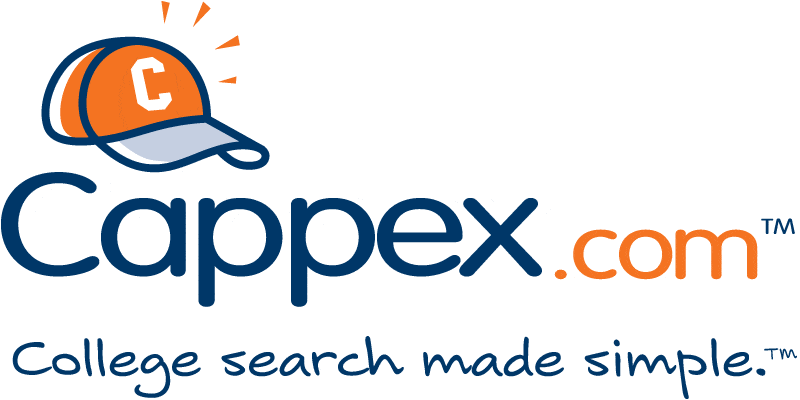

019.
High School Core Subjects and Electives
How to decide High School Core Subjects?
What electives should my highschooler take?
What constitutes as a high school credit?
Tune in this week while we discuss these topics and more!

TWO WAYS TO LISTEN TO THIS EPISODE:
1. Click PLAY Button Above ^^ to listen here.
2. OR Listen on your favorite podcast platform:
Scroll Down for this week’s FREEBIE:
Course Planning Sheets (pdf)
Brand New to Homeschooling?
GETTING START PAGE >>
Kindergarten Page >>
High School Series >>
Show Notes
Welcome to the second episode in our High School Series!
We know that the idea of homeschooling high schoolers can seem daunting, but we are here to assure you that with a good plan in place, homeschooling high schoolers can be a cinch! In our first high school series episode, we covered how to make a four-year plan and everything you need to know before starting your plan – graduation requirements, state law requirements, and more. It’s a great jumping off point for those of you that are just starting out. I always say that I really thought it was easier to home school high school than homeschooling was in younger grades. You really become more of an administrator than a teacher, especially if you are outsourcing some or even all of your subjects.
So what subjects does my high schooler NEED to take? (6:44)
There are several ways you can look at setting up your high school class plan. Most importantly, look at your state homeschooling requirements to see if you are bound to certain requirements and restrictions. We are here in Texas, where we are considered our own private school, and we get to set our own graduation requirements.
There are two things that you may want to consider. One, what are your state’s *public* high school graduation requirements? The average is between 21 and 26 credits. That is often a great guideline of the minimum classes/credits you may want to strive for and may want to be your goal for a student who may not be college bound.
Learn more about creating your high schoolers documentation and download your FREE Transcript Templates (doc and xls)
Remember, you do NOT have to meet these requirements! They are separate from your state’s *homeschool* requirements and you don’t always need to adhere to those. However, being aware of them may be helpful, especially when applying to State universities. Many homeschoolers exceed well beyond the state requirements.
If you’re not in Texas, you can view your: State Homeschool Laws and Requirements
Also, if college bound, work backwards and look to see what some of the potential colleges your student may be interested in requiring for incoming applicants. You can find this information on college admissions websites pretty easily. We suggested making a list of both of these class recommendations to start and then planning from there.
College Requirements:
When researching admissions requirements for colleges, like required high school courses, your best resource is going to be the college’s admissions website (or the college admissions advisors). We mentioned it in our High School Trailer Episode.
Other sources for college admissions information includes:


A good basic list of core classes may include:
This is just a suggestion. Again, one of the huge benefits to homeschooling is that you are able to completely cater the education experience to your child. There are endless opportunities to how you may want to set this up for your student.
● Language Arts (English I, II, III, IV – regular, honors, or Advanced Placement®*): 4 credits
● Speech: .5 or 1 credit
● Math (Algebra 1 and above): 4 credits
● Science (Biology, Chemistry, Physics, Science elective): 4 credits, 3 lab
● Social Studies (U.S. History, World History, American Government .5/Economics .5, Social Studies elective, ie. Geography) : 4 credits
● World Language (2-3 years in the same language): 2-3 credits
● Electives (Any other electives offered for credit): 5 credits
Choosing core curriculum
Years ago, there were few options for homeschool curriculum-especially high school. That’s not the case anymore. Now we have SO many options, and that can be overwhelming to select the best fit for your student and family.

Some things you may want to ask are:
Are they college or career bound? What are their personalities like? What are their interests and abilities? 7 S
When you are ready to research core curriculum, you need to keep a few things in mind.
- Keeping the big picture in mind
- Parent time investment
- Student time investment
- Financial investment
- Student learning style
Remember, there’s not ONE right way to homeschool high school, so there’s not ONE right kind of curriculum. And beware of the folks who say: You MUST use this curriculum because it’s the right way! (Sometimes, they are selling expensive curriculum!)
We want to circle back to the basics of worldview and homeschool philosophies, and what kind of materials you are looking for (online, book based, etc.) before choosing curricula. This narrows down your search immensely and things may have changed since you first started on your journey, or maybe you are brand new to homeschooling altogether. If so, you may find our episode 004 on Homeschool Styles and Philosophies handy:
What electives should I choose? (16:28)
When it comes to electives, your imagination is really all that limits you. Typically, there will be one to three elective courses in each year of high school. Too many electives can overshadow the core academic courses. Your student’s electives should reflect who your student is and what they are all about. When we think of electives, some things come to mind:
• This is one of those places where you can incorporate your student’s talents, interests, and achieve that stand out status.
• Electives can allow your student to explore career options.
• Elective call for authentic experiences- your student can oversee their own education and incorporate many different ways of learning.
• Electives leave room for unconventional experiences like internships and more.
• They don’t have to require lots of book work.
Elective courses require less work from your student than core academic courses. While some electives fit within the core academic subjects of Math, Language Arts, History, Science, Foreign Language, others are not core subjects at all – for example, PE, Auto Maintenance, Theater, Cooking. You will be able to find existing curricula for many of the elective courses your student might want to take. However, you can also easily design these courses yourself.
There are so many options for electives, really this can be an endless list. There are certain options that may be pretty standard- PE, health, drivers ed, music art, etc. But you can also look to electives as a way of fine tuning a student’s specific interests or maximizing on a talent or specialty. When it comes to electives, your imagination is all that limits you! Typically, there will be one to three elective courses in each year of high school. See our FULL List of Electives

Some colleges may want 2 fine art credits specifically, some don’t specify at all, so again, looking at what potential schools require or recommend can help you fine tune your list. Electives are also a great spot to start when exploring dual credit programs. These can be easier classes to start with and knock out college credit at the same time.


What constitutes a credit? (22:59)
Credits are a way of measuring a student’s completion of the educational requirements you have set or that are required by your state homeschool laws. Most high school courses are going to be worth either 1.0 credit (for a one-year course) or 0.5 credit (for a semester course). The credit assigned to a course generally takes into account course content, instruction time, and the time the student spends completing course work.
A textbook designed to be completed in one school year is typically given 1.0 credit, while a textbook meant to be completed in one semester is often given 0.5 credit. Many publishers and curriculum providers are going to provide this information online or in the actual text. It’s important to note that even many school systems don’t finish the entire book or class. We usually recommend that your student completes at least 75–80% of the assignments in a textbook to earn the credit.
For courses that don’t follow a set curriculum, you can determine credit by keeping track of the reasonable time your student spends on the course work. For a core course (English, science, history, math, or foreign language), you will want your student to log at least 150 hours for 1.0 credit (roughly five hours a week for 30 weeks). Logging more than 150 hours does not earn a student more credit; it simply indicates that the threshold of 150 hours has been passed.
For honors courses and Advanced Placement (AP) courses, students may log far more than the 150 hours. Generally, honors courses require 8–10 hours per week for 30+ weeks, and AP courses require 10–15 hours per week for 30+ weeks. Even though honors and AP courses demand more hours than a standard high school course, they do not earn more credit when students spend more than 150 hours completing them. Instead, there may be GPA rewards to taking these more challenging courses. For instance, we award an extra .5 point for honors courses and an extra 1 point for AP/Dual credit courses on our transcript.
For a lab science course, you want to log a minimum of 180 hours; the additional 30+ hours are for required lab work. One college we applied to required an addendum for homeschool, private, and charter school students to determine that their high school lab science classes were legitimate.
For an elective course (such as physical education, art, music, or another course that is not a core academic course), log 120+ hours for 1.0 credit and 60+ hours for 0.5 credit.
If you have a student who is a musician for example, consider all their lessons, practice time, performances as credit. Open mic nights totally count! So does writing a theme song for your mom’s podcast! Kids that are competitive athletes may receive PE credit because they definitely put in the training/competition time.
If your teen completes a 3- to 5-credit college course in one college session (either an eight-week term, 11-week quarter, or 15-week semester), we recommend converting this course to a 1.0 credit high school course on your teen’s high school transcript. Even with abbreviated classes, the amount of coursework is often the same as if this was a semester or year long class.
Also, consider that not everything needs to be a class. I see that a lot on message boards- “my kid spends x amount of time a week doing this, how do I make it a class….” You *want* to have some great extracurriculars included in your records- it makes your student appear more well-rounded and interesting.
You also don’t want to just add classes for the sake of filling up your transcript. It can delegitimize the rest of your transcript. We already work hard to give our kids varied classes and learning opportunities with other teachers to avoid the appearance of just “mom grades”, so we don’t want to add a bunch of nonsense filler just for the sake of filling space and saving time. We are all about multi-tasking but be smart about it.
This Week’s Freebies:
Excel credit planner Free only week of release







